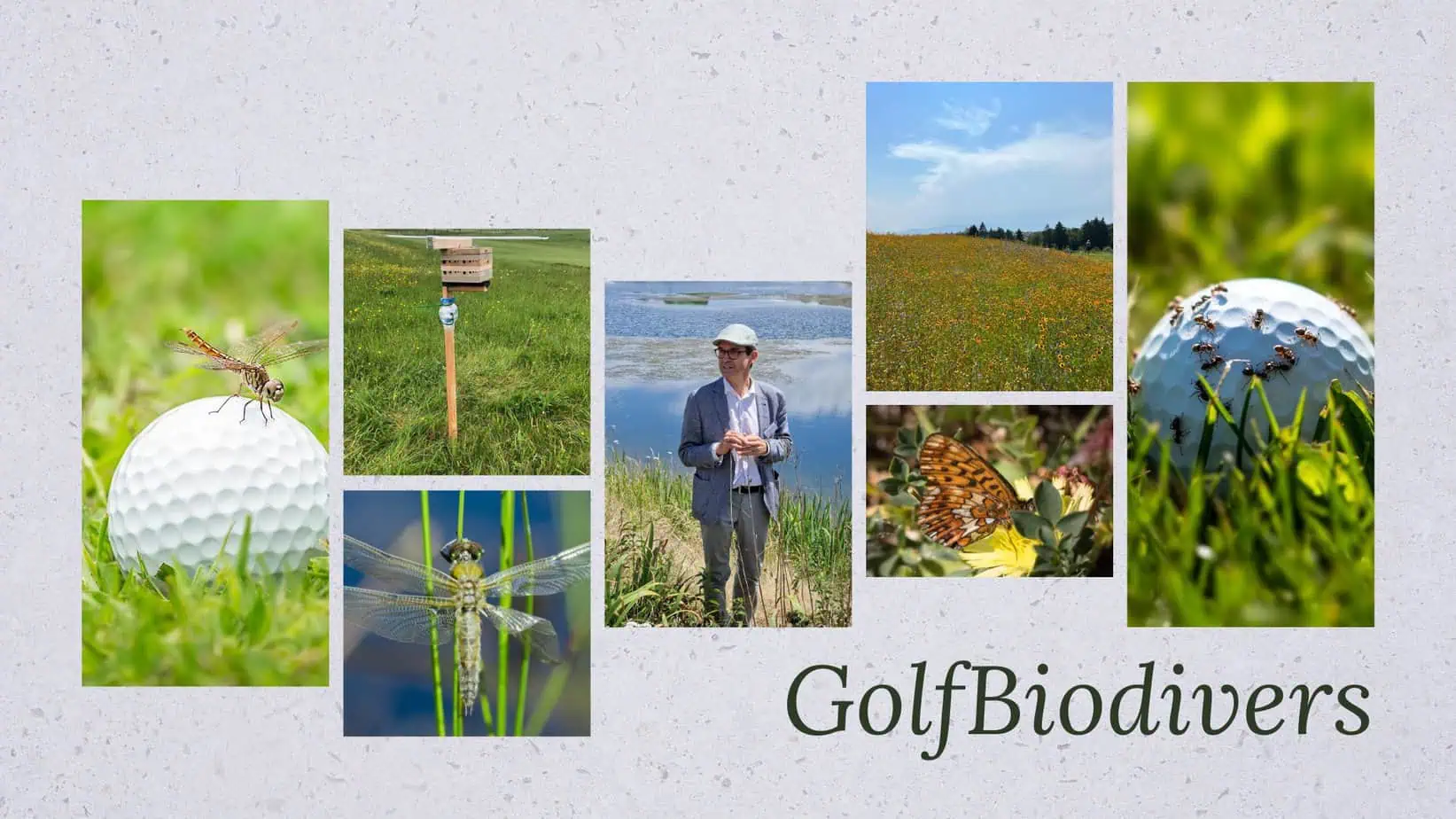GolfBiodivers: Positive conclusion for the start-up phase
“The idea works” – Prof. Dr. Johannes Kollmann is not a golfer but knows a thing or two about golfers and golf clubs. Since 2017, the specialist in renaturation ecology, who is in charge of this department at the Technical University of Munich, has repeatedly been involved in research work on the subject of golf. The large areas appealed to him right from the start, and he had no fear of contact with the sport of golf. He now also coordinates the nationwide GolfBiodivers research project from a university perspective. 64 golf courses, four universities, the Federal Agency for Nature Conservation and the German Golf Association are involved. 2.7 million in research funding is available. In terms of sport and biodiversity, it is a huge project in Germany.
After the first year of GolfBiodivers, Kollmann is satisfied. “We are seeing the first visible successes, for example at Erding in Bavaria or at Wulfsmühle in Schleswig-Holstein.” The GC Erding-Grünbach and the Gut Wulfsmühle golf course are two of 16 golf courses, where standardized enhancement measures were carried out along forest edges or in rough areas over an area of three hectares in 2023.” The seed used for the enhancement is specially tailored to each golf course. Both in the north of Germany and in the south, the weather conditions were a challenge. “In July, it only didn’t rain for seven days,” recalls Pia Tappe from Kiel University last year. “This year is going better.”
Her colleague Dr. Sandra Rojas Botero, who is coordinating the project in Bavaria as the representative of TUM in Weihenstephan, agrees.
Both scientists and their teams have now found a good working basis with the golf courses. They know each other, and the greenkeepers’ expertise is sought. Rojas Botero was pleasantly surprised by the biodiversity that could be found on some of the courses even before the project began. “The Holledau golf course, for example, which has now been added, already has some really beautiful meadows.”
Helping clubs to help themselves
One thing is clear: the decisive factor is not what is there today but what the golf courses do with the knowledge they have acquired after receiving scientific guidance from the project. “The majority of golf courses are very grass-dominated,” explains Rojas Botero. How well this can be changed can be seen, for example, at GC Erding-Grünbach, where herbs and small flowers are now also developing. “The success will only be sustained if the golf courses understand that this is helping them to help themselves,” explains Kollmann.
Some of the club managers who successfully applied in phase 1 apparently misunderstood this. “Occasionally, of course, you come across people who think that the Federal Agency for Nature Conservation is now paying for the measures, we as scientists are organizing it, and that’s that.”
In fact, the success and learning success of GolfBiodivers also depends very much on the commitment of the golf courses. One side effect, according to Kollmann’s experience, is that some golf courses are now much more aware of which areas are eligible for funding. This proved to be a stumbling block time and again: some of the selected areas are already being used by tenants or golf courses in another funding program. “Double funding just doesn’t work,” Kollmann makes clear.
Patience is an essential building block of successful science – golf courses are also becoming aware of this principle.
Anyone who thought that installing the special voice recorders for birds or insects would be followed by an inventory list for the club was mistaken. Pia Tappe and Sandra Rojas Botero smile at this point.”Accurate recording takes time,” they both explain. Tappe, for example, has an AI program that converts the vote recording results into a list of species.
“However, this then has to be completely checked again in person by an employee to rule out errors that the AI is still making at the moment.”
Bee identification
The situation is similarly difficult for bees. The eggs collected by the nesting traps have now undergone a long cooling phase at the University of Freiburg before being hatched there. Just like the natural cycle in nature. The bees are now being prepared there, and the species have to be identified. GolfBiodivers is a project that is all about the before and after.
At the end of the six-year research project, Kollmann and his colleagues want to leave behind sound knowledge about how green spaces that are not in play can be sensibly enhanced so that biodiversity increases. But those responsible at the golf courses have already learned. After all: “It starts with the selection of the areas,” explains Christina Druve from the Wulfsmühle golf course, who has been very interested in the topic of ecology on the golf course for years.
“But even if you want to consider the topic, you are often blinded by it and no longer recognize many possibilities. The meadows between the fairways that we have now created are great. It’s great that we can now use these areas well.”







